Aspen is not just famous for its ski slopes but also for its rich wildlife. The area is home to a variety of animals, each playing a vital role in the ecosystem. From the majestic elk roaming the meadows to the industrious beavers shaping the rivers, Aspen’s wilderness is a vibrant community of creatures.
This guide introduces some of the most iconic wildlife you can find in Aspen, highlighting their habits, characteristics, and importance to the natural world.
Key Takeaways
- When visiting Aspen, you can see elk, bighorn sheep, beavers, moose, bears, as well as golden eagles.
- Elk are social animals that live in large herds and are known for their impressive antlers, which are found only in males.
- Bighorn sheep are excellent climbers, adapted to life in rugged terrains, and males have curled horns used for defense and social dominance.
- Beavers are ecosystem engineers who build dams and lodges, creating wetlands that support diverse species and improve water quality.
- Golden eagles have a wingspan of up to 7 feet and are top predators in the Aspen ecosystem, symbolizing strength and freedom.
- Moose are the largest members of the deer family, preferring solitude and capable of navigating deep snow and swimming across bodies of water.
Which Animals Can You Encounter in Aspen?
1. Elk

These creatures roam in large herds across the mountain meadows, feeding on a diet rich in plants and grasses, which sustains their impressive size and health. Males, known for their impressive antlers, engage in dramatic displays during the mating season, a spectacle that attracts wildlife enthusiasts from around the world.
Weighing between 500 to 700 pounds, elk not only symbolize the wild spirit of the Rockies but also play a key role in the ecosystem by influencing the distribution of plant species.
Observing them from a distance, one can’t help but be awed by their serene presence and complex social dynamics, which include intricate communication and hierarchical structures within the herd.”
2. Bighorn Sheep
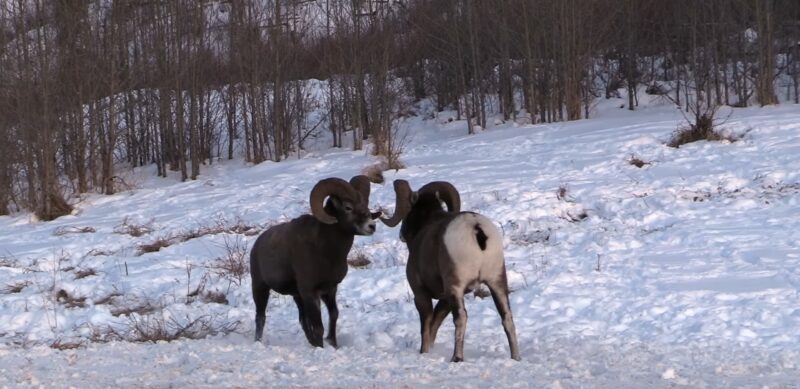
The Rocky Mountain bighorn sheep, with their distinctive curled horns and agile hooves, are a symbol of the rugged terrain they inhabit. These excellent climbers navigate steep cliffs with ease, showcasing their remarkable adaptation to the high-altitude life that few other species can endure.
Weighing up to 300 pounds, bighorn sheep are a testament to the resilience of wildlife in Aspen’s challenging environments, thriving where resources are scarce and conditions are harsh. Their social structure, characterized by the dominance of rams with the largest horns, plays a crucial role in mating rituals and herd dynamics.
The sight of bighorn sheep maneuvering the mountainous terrain with precision and grace is a powerful reminder of nature’s adaptability and the survival instincts that drive the wilderness.
3. Beavers
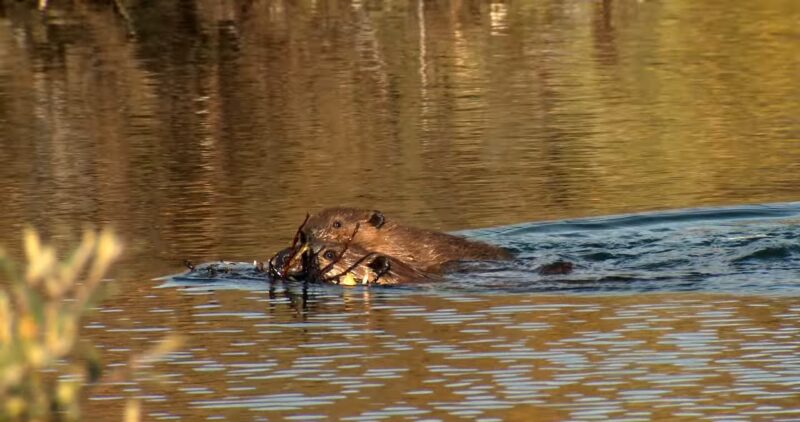
Beavers play a crucial role in shaping the Aspen landscape, acting as natural architects whose dam-building skills create essential habitats for a diverse array of species. These nocturnal architects work tirelessly, using their sharp teeth to gnaw through trees and vegetation, constructing dams and lodges that transform streams and rivers into thriving wetlands.
This activity not only enhances water quality and biodiversity but also provides critical habitats for numerous aquatic and terrestrial species. Observing a beaver lodge or dam offers a lesson in nature’s ingenuity and interconnectedness, showcasing how a single species can have a profound impact on its environment.
The presence of beavers is often a sign of a healthy ecosystem, where the balance between water and land nurtures life in all its forms. Did you know that the Aspen area is home to the “Pando” forest, which is considered one of the largest and oldest living organisms in the world?
This massive grove of quaking aspen trees is actually a single organism connected by a vast underground root system. Estimated to be thousands of years old, it covers over 106 acres and consists of approximately 47,000 genetically identical trees, showcasing the incredible interconnectedness of nature.
4. Golden Eagles
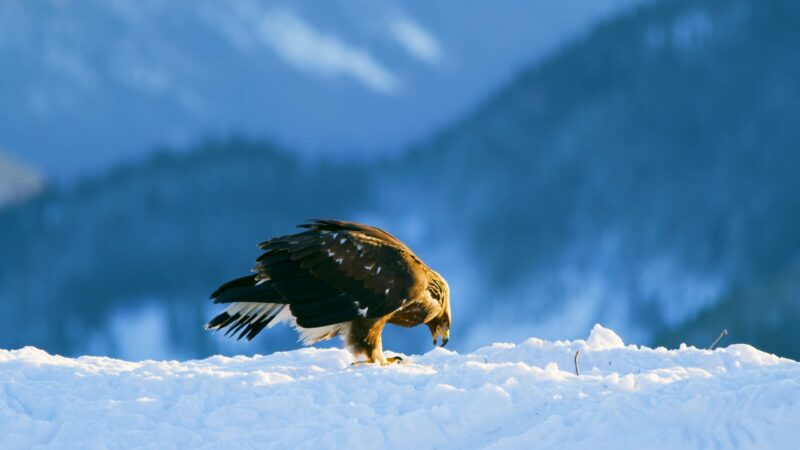
With a wingspan of up to 7 feet, golden eagles dominate the skies of Aspen, embodying strength and freedom as they glide effortlessly above the landscape. These powerful birds of prey hunt with precision, their keen eyesight allowing them to spot small and medium-sized animals from great distances.
The sight of a golden eagle soaring high is a testament to the vastness of the wilderness and the intricate balance of the ecosystem, where each creature plays a role in maintaining the health of the environment.
Golden eagles are not only apex predators but also key indicators of ecological health, their presence signaling a rich diversity of life. Observing these majestic birds in their natural habitat inspires a sense of awe and a deeper appreciation for the complex web of life that sustains the wilderness.
5. Marmots
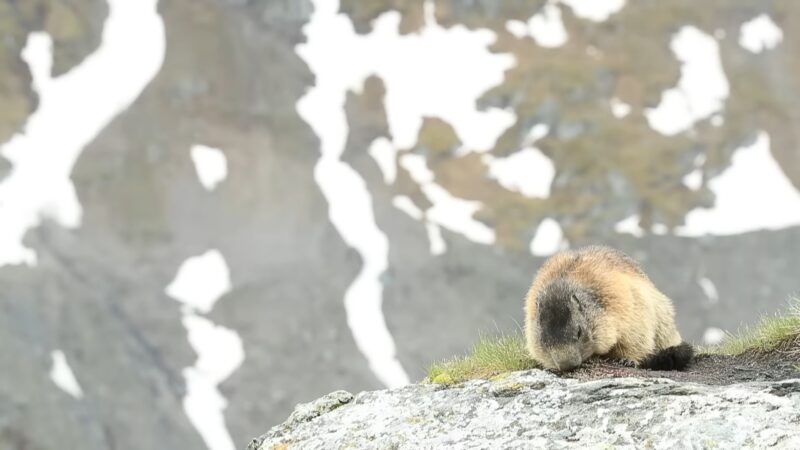
Marmots, the large, social ground squirrels, are a common sight in Aspen’s alpine zones, where their whistles can be heard echoing across the landscape. These creatures spend the warm months feeding and preparing for winter hibernation, gathering food, and fortifying their burrows against the cold.
Their social interactions and alarm calls play a vital role in the survival of the colony, alerting each other to the presence of predators. Marmots’ burrows and social structures offer a glimpse into the complex social dynamics of wildlife, even among the smallest inhabitants, highlighting the importance of community and cooperation in the natural world.
Observing marmots in their natural setting provides insight into the cycle of life in the mountains, from the bustling activity of summer to the quiet of winter hibernation.
6. Moose
Moose, the largest members of the deer family, roam Aspen’s forests and wetlands, their impressive antlers and towering stature making them one of the most awe-inspiring sights in the wilderness. These solitary creatures prefer the tranquility of remote areas, where they can be found grazing on a diet of leaves, twigs, and aquatic plants.
The presence of moose in Aspen is a sign of a healthy and undisturbed natural environment, where large mammals can thrive without the encroachment of urban development.
Observing a moose in the wild is a moment of quiet awe and respect for the solitude of nature, a reminder of the importance of preserving natural habitats for future generations. Their ability to navigate through deep snow and swim across large bodies of water showcases their adaptability and the critical role they play in the ecosystem.
7. Bears
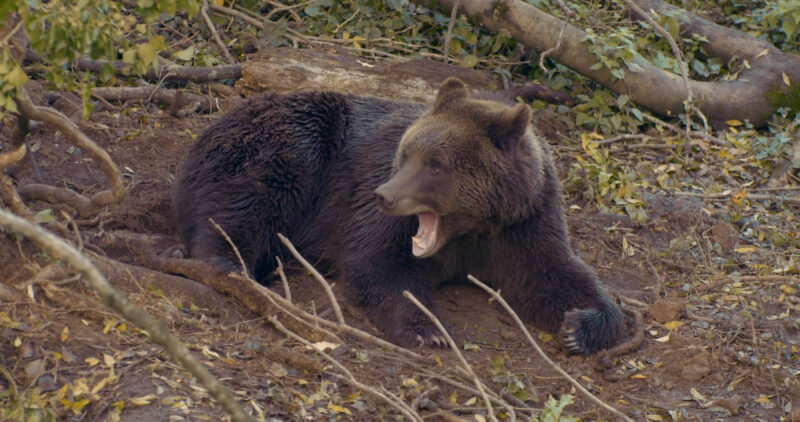
Black bears, with their keen intelligence and adaptability, are a vital part of Aspen’s ecosystem, roaming the forests in search of berries, nuts, and other foods. These omnivores have a varied diet that changes with the seasons, reflecting the richness of their natural habitat.
Encounters with bears, while rare, remind us of the importance of respecting wildlife habitats and the measures necessary to ensure peaceful coexistence, such as securing food sources and minimizing human impact on the wilderness.
Bears’ ability to hibernate through the winter is a fascinating aspect of their biology, allowing them to survive in harsh conditions by slowing their metabolism. Observing these creatures in their natural environment, one gains an appreciation for the balance of nature and the interconnectedness of all living things.
FAQs
How do elk adapt to the changing seasons in Aspen?
Elk migrate between different elevations depending on the season, moving to higher meadows in the summer for cooler temperatures and descending to lower valleys in winter for access to food.
What role do bighorn sheep play in preventing soil erosion?
Bighorn sheep help control the growth of certain vegetation, which can stabilize soil and reduce erosion by grazing in high-altitude areas where few other large mammals can live.
How do beaver dams affect fish populations?
Beaver dams can create ideal habitats for fish by slowing down the flow of rivers, increasing water depth, and improving water quality, which supports more diverse and abundant fish populations.
Are golden eagles threatened by any human activities in Aspen?
Yes, golden eagles can be threatened by habitat loss due to development, collisions with vehicles and structures, and disturbances during nesting season from outdoor recreational activities.
What measures are taken in Aspen to protect moose populations?
Measures include habitat conservation efforts, regulations on hunting to maintain healthy populations, and public education campaigns to minimize human-moose conflicts.
How do black bears prepare for hibernation in Aspen?
Black bears enter a phase called hyperphagia in the fall, where they eat extensively to build up fat reserves that will sustain them through the winter hibernation period.
Final Words
Understanding Aspen’s wildlife is crucial for appreciating the area’s natural beauty and the ecological balance. The animals, from elk to bears, play specific roles in their environment. It’s important for us to respect and protect their habitats to ensure these species thrive.
Learning about these animals encourages us to support conservation efforts and be mindful of our impact on nature.
